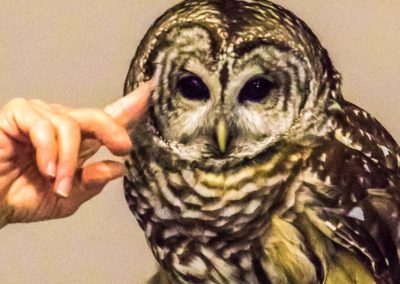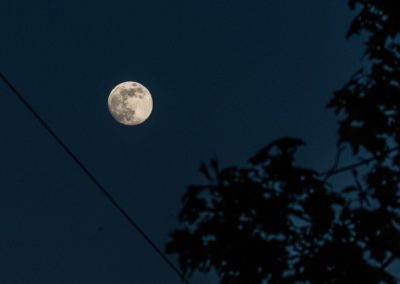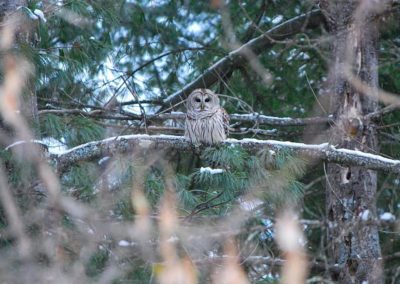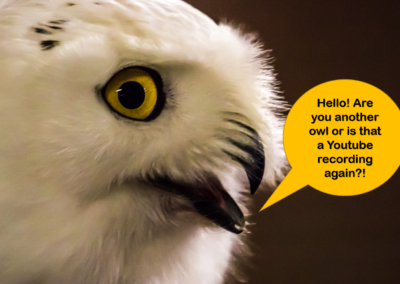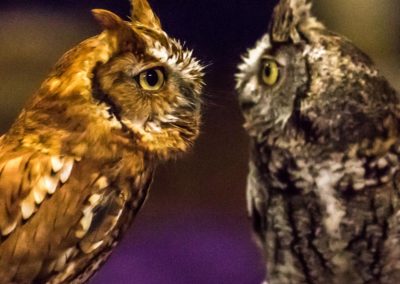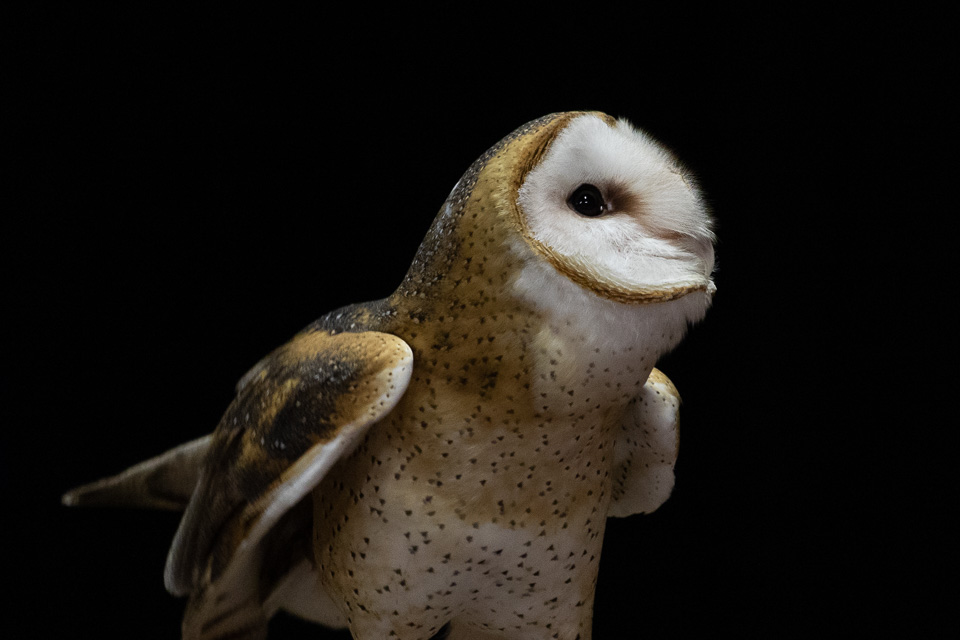
Are you filled with wonder when you see an owl? Have you ever gone searching for owls with friends and family? Maybe you’ve even glimpsed the shadowy form of a Great-horned Owl in the beam of your headlights as you traveled a back road at night?
If so, you may be surprised to learn that owls can be heard in most neighborhoods and backyards, even in Boston! And while owls can be found in most communities across Massachusetts, it’s important to know proper etiquette when actively looking for owls in your region. Here are 6 beginner tips for safe owling in your local woods, wetlands and conservation areas.
1) Shhh! Too loud!
Owls have excellent hearing and will hear you! They have non-symmetrical ears that channel sound into their facial disc. The quieter you are when owling, the less you will disturb and stress the birds. Remember to turn cell phones and other mobile devices off or mute ringtones.
2) When should I go owling?
While many species of owl are nocturnal, several types of owls are crepuscular—active during the twilight hours of dawn and dusk. Believe it or not, our seasonal resident snowy owls are diurnal—they hunt and are active both day and night.
3) Look closer!
Owls have natural camouflage and are difficult to sight even when a bird is nearby. Looks for signs of feeding activity like pellets or whitewash to help locate owls in the wild.
4) Can you hear me now?
Recordings of owl calls will attract an owl for a better view, but at a heavy cost. These birds are responding to what they believe is a potential mate or competitor. This can stress and distract the birds! Recordings should be used sparingly or not at all.
5) Leave nesting owls alone!
Don’t disturb owls during nesting season! Mid-summer to early autumn can be an ideal time for owling. Young owls, who are often less secretive and easier to spot, have fledged by this time.


